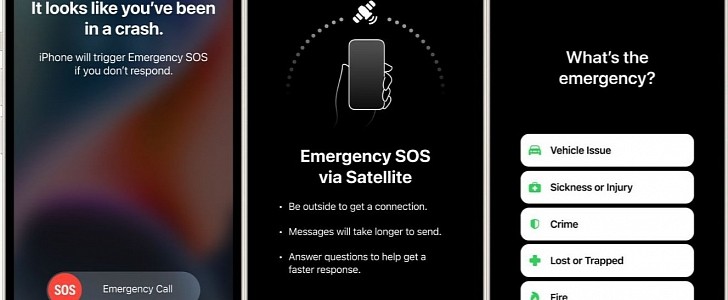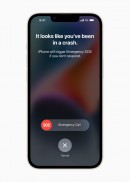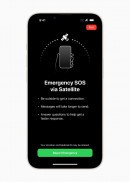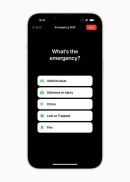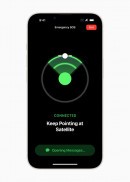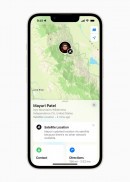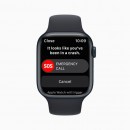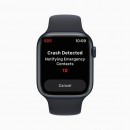Technology can save lives, and the safety assist systems on modern vehicles prove this. But when the technology is rushed to market, things can go wrong, becoming a nuisance at best and public danger at worst.
When the iPhone 14 launched in September, its Crash Detection feature was considered a life-saving technology. Indeed, mobile devices feature accelerometer sensors and software that can guess when a crash can occur. In the case of the recently launched iPhone, Apple boasted about a high dynamic range gyroscope and a dual-core accelerometer capable of detecting G-force measurements of up to 256Gs. The data they gather is analyzed, and the algorithm can determine whether to call emergency services or not.
This is a nice feature, but only when it works accurately. As my friend Sebastian predicted, many things can go wrong with such new features, no matter how many times Apple crashed their iPhones to determine the threshold of a real crash happening. From not calling 911 when it should to calling the emergency service for no reason, pick your worst-case scenario because it seems both are happening in real life.
According to WSJ reporter Joanna Stern, emergency services are flooded with automated messages of people allegedly being involved in a severe crash when in fact, they were enjoying a rollercoaster ride. In a tweet, Joanna shares an example of an automated 911 call placed while the iPhone 14 owner was strapped to a rollercoaster at Cincinnati’s Kings Island amusement park. As the message plays, you can hear the people screaming in the background as the rollercoaster continues its ride.
Stern says that Warren County, where King Island is located, has received six emergency calls triggered by park rides since Apple released the iPhone 14. As you can imagine, the situation is no different in other parts of the country. According to the WSJ piece, an Apple spokesperson insisted that the feature is “extremely accurate in detecting severe crashes” and will continue to improve with time.
Hopefully, because Crash Detection can save lives, but can also waste the time of emergency workers, which could cost lives. The iPhone 14 is fairly new, and the problem would only worsen when millions of people have one. And just like crying “wolf!” too many times, this could have the opposite effect. When faced with many such false alerts, emergency workers might not respond to legitimate automatically-detected crashes.
In the meantime, some amusement parks have taken the matter into their own hands and warned people to leave their phones behind. According to Business Insider, the amusement park Dollywood has posted warning signs at two of its most extreme rides.
“Cell phones and other devices should not be brought aboard any attraction,” the signs read. “Due to the dynamic movement you will experience on this ride, Apple Watches and similar devices may activate their emergency call function. To prevent your device from making unintended 911 calls, please turn it off or enable airplane mode.”
This is a nice feature, but only when it works accurately. As my friend Sebastian predicted, many things can go wrong with such new features, no matter how many times Apple crashed their iPhones to determine the threshold of a real crash happening. From not calling 911 when it should to calling the emergency service for no reason, pick your worst-case scenario because it seems both are happening in real life.
According to WSJ reporter Joanna Stern, emergency services are flooded with automated messages of people allegedly being involved in a severe crash when in fact, they were enjoying a rollercoaster ride. In a tweet, Joanna shares an example of an automated 911 call placed while the iPhone 14 owner was strapped to a rollercoaster at Cincinnati’s Kings Island amusement park. As the message plays, you can hear the people screaming in the background as the rollercoaster continues its ride.
Stern says that Warren County, where King Island is located, has received six emergency calls triggered by park rides since Apple released the iPhone 14. As you can imagine, the situation is no different in other parts of the country. According to the WSJ piece, an Apple spokesperson insisted that the feature is “extremely accurate in detecting severe crashes” and will continue to improve with time.
Hopefully, because Crash Detection can save lives, but can also waste the time of emergency workers, which could cost lives. The iPhone 14 is fairly new, and the problem would only worsen when millions of people have one. And just like crying “wolf!” too many times, this could have the opposite effect. When faced with many such false alerts, emergency workers might not respond to legitimate automatically-detected crashes.
In the meantime, some amusement parks have taken the matter into their own hands and warned people to leave their phones behind. According to Business Insider, the amusement park Dollywood has posted warning signs at two of its most extreme rides.
“Cell phones and other devices should not be brought aboard any attraction,” the signs read. “Due to the dynamic movement you will experience on this ride, Apple Watches and similar devices may activate their emergency call function. To prevent your device from making unintended 911 calls, please turn it off or enable airplane mode.”
Since the iPhone 14 went on sale, the 911 dispatch center near Kings Island amusement park has received at least six phones calls saying:
— Joanna Stern (@JoannaStern) October 9, 2022
“The owner of this iPhone was in a severe car crash...”
Except, the owner was just on a roller coaster.
???? by me: https://t.co/hp1fHZBIf6 pic.twitter.com/i0lZPoWzGz
